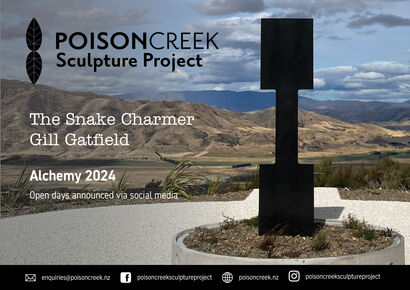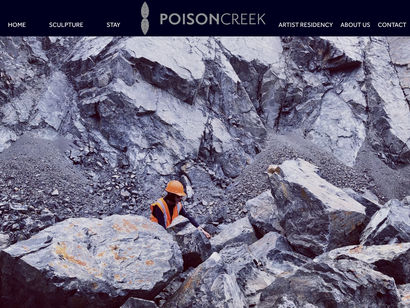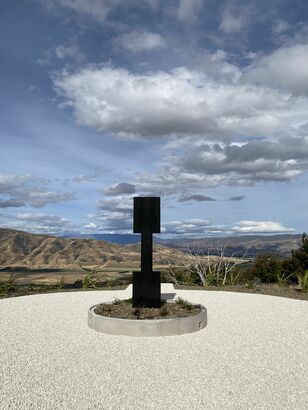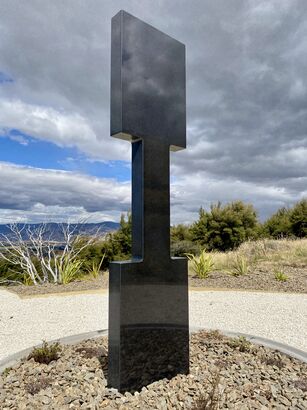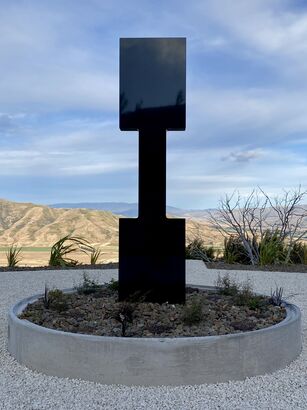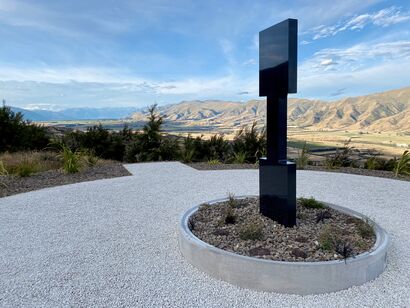A site-sensitive land art project draws on deep time and reflects the healing kaupapa of Poison Creek, named for a toxic plant revered by tohunga, Māori spiritual leaders, and feared by farmers. The large-scale work evolved from the artist's 2023 residency research and exploration in this unique ecology and cultural landscape. The striking geometric tableau combines mythology, science, and healing traditions on the slopes of Taraputa (Mt Pisa), above the ancestral Mata-Au (Clutha River). The circular ground plane is made from limestone, the origins of which began 20 to 30 million years ago when the Islands of Aotearoa were submerged under the sea. In the clear coastal waters, billions of sea creatures amassed on the sea floor, forming layers of shells and bones that hardened and were later uplifted into dramatic karsts on the mountains surrounding Poison Creek. One such karst caused European explorers to change the name of the ancestral mountain Taraputa to Mount Pisa.
Concentric circles of native medicinal planting, selected and nutured according to Rongoā Māori, surround a black granite figure which is visible through four openings in the regenerating landscape. The apertures mark the ley lines between distant mountain peaks, a snake-bend in the awa, and points of significance at Poison Creek. At the crossroad, an abstract I transforms in the alchemy of mist, wind and light, at once a mystical totem and contemporary text-symbol, human and spirit, an I/eye or One, a pou or column, an incantation or hum.
Poison Creek Sculpture Project hosts a dynamic contemporary sculpture collection celebrating Aotearoa New Zealand's finest sculptors and rising stars in the high country tussock fields of Central Otago, Te Waipounamu.
